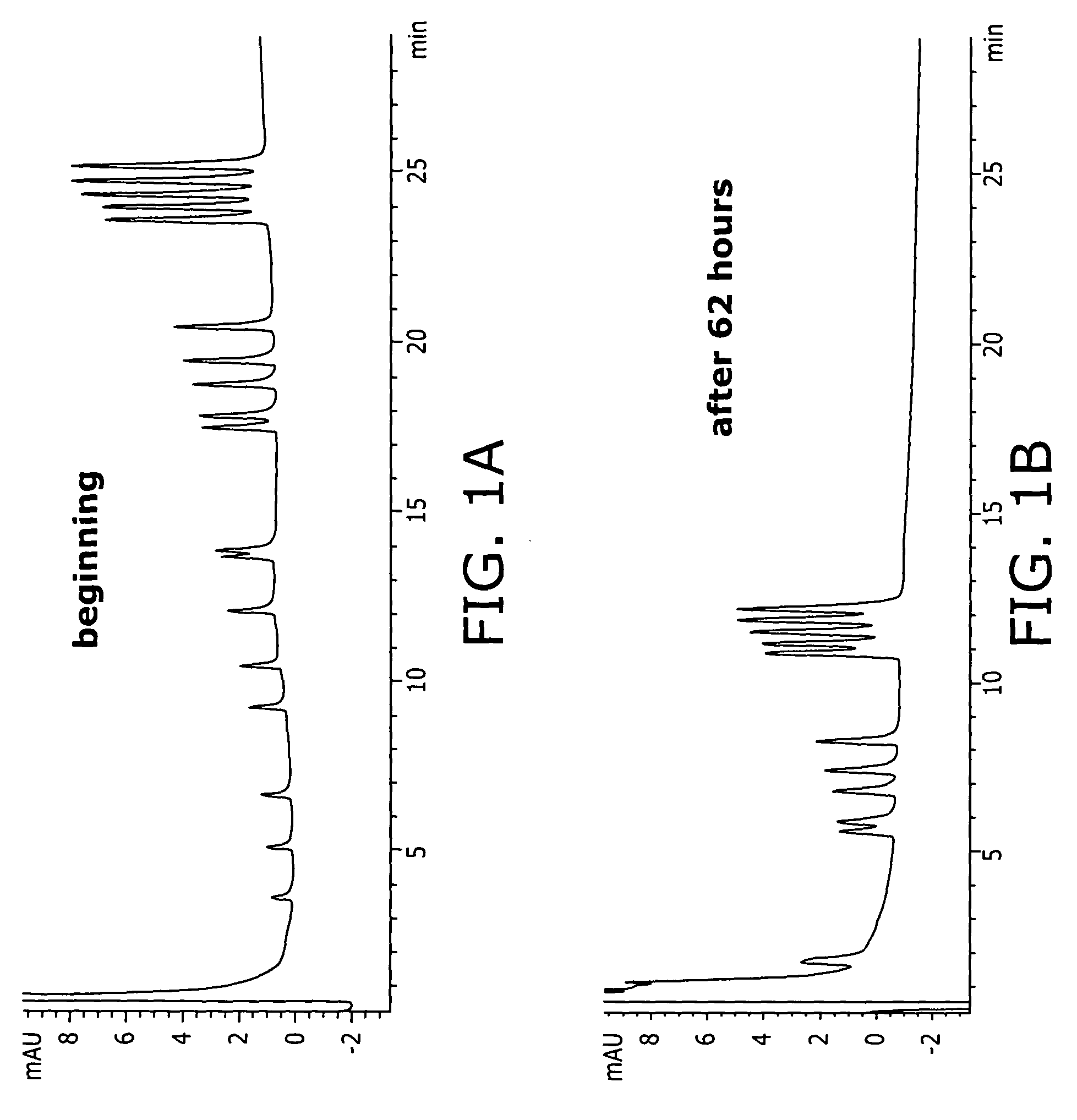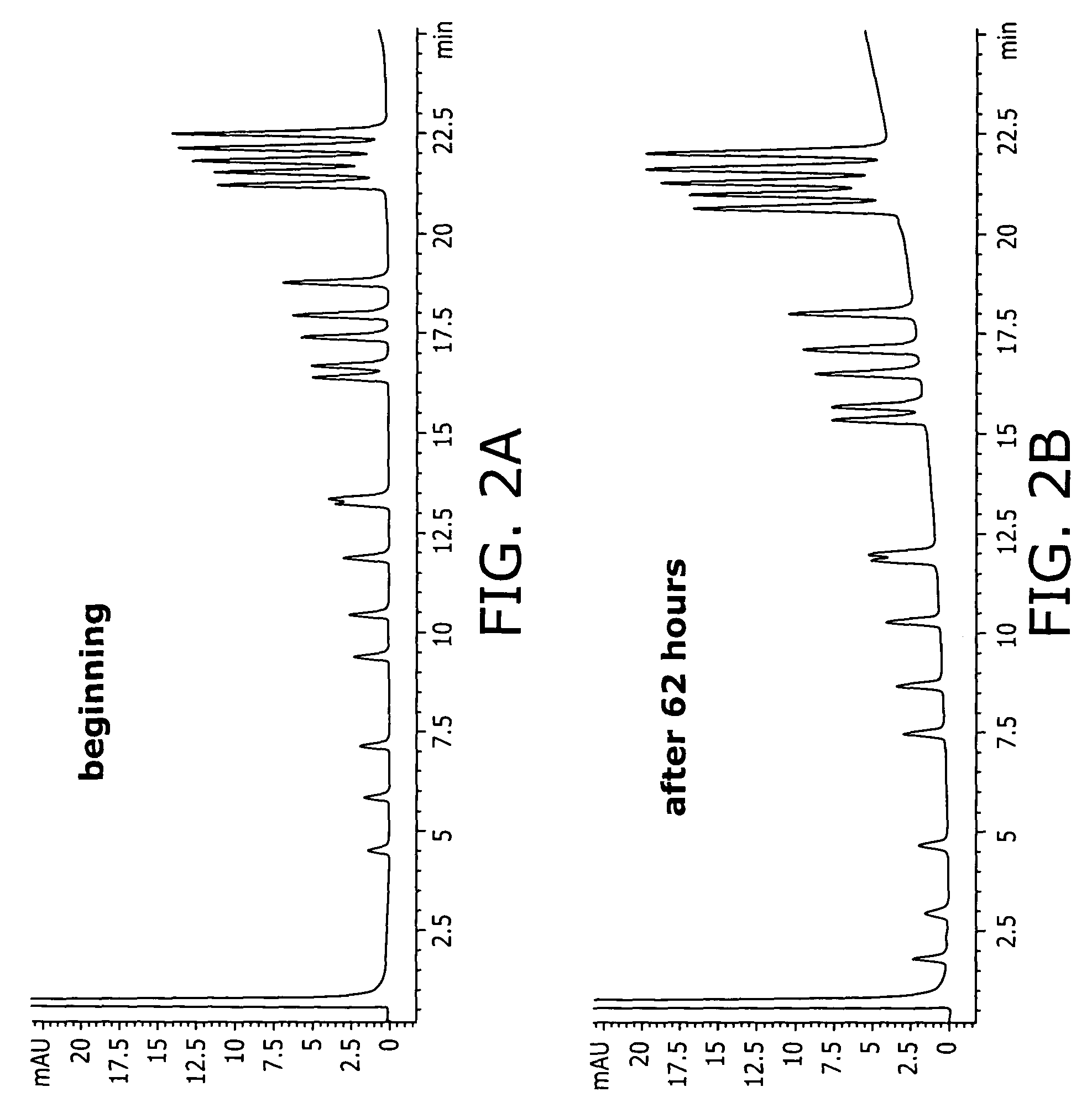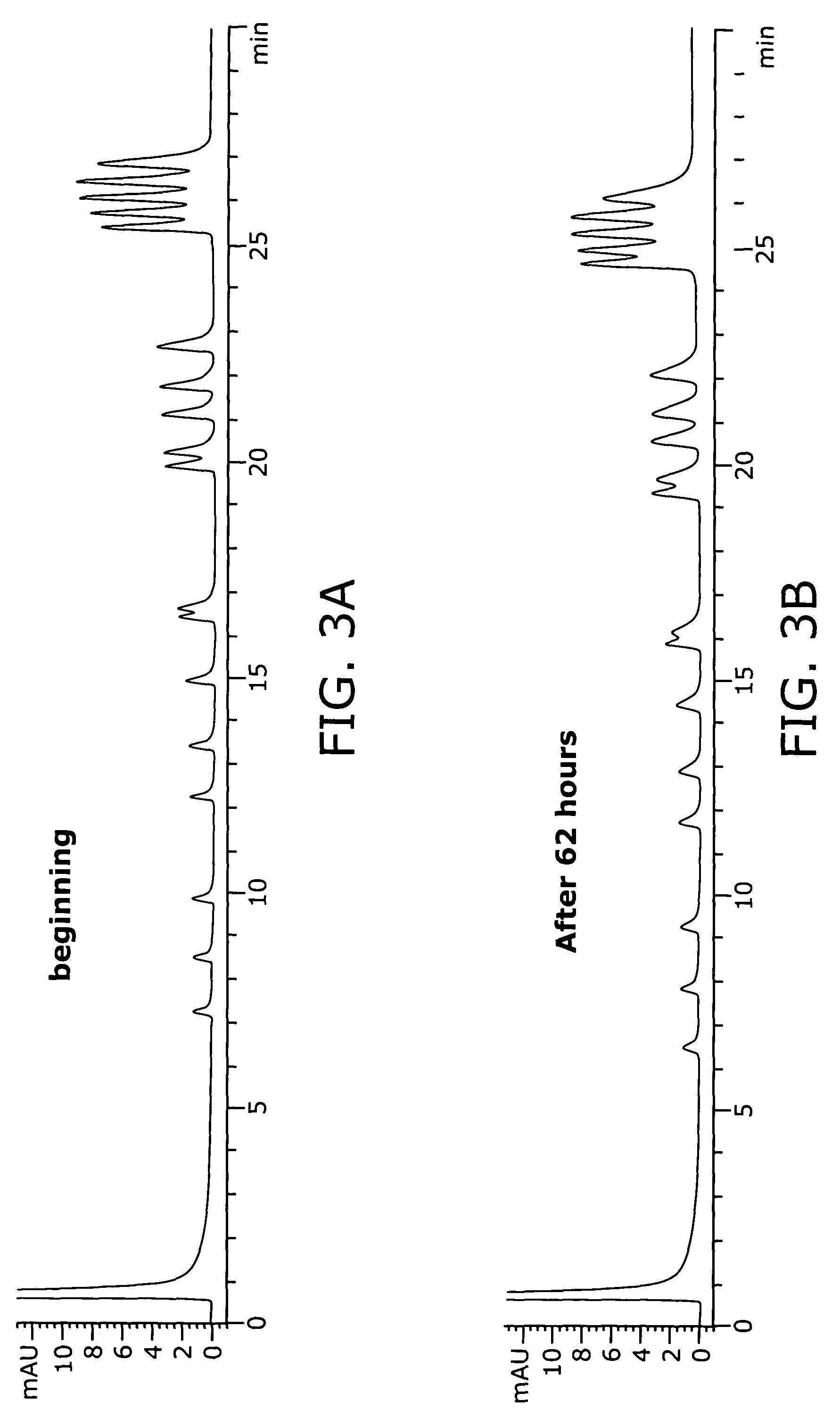Additives for reversed-phase HPLC mobile phases
a technology of additives and mobile phases, which is applied in the direction of ion-exchangers, separation processes, instruments, etc., can solve the problems of reducing so as to improve the efficiency of the column and reduce the loss of column performance. , the effect of high retention of analytes in the column
- Summary
- Abstract
- Description
- Claims
- Application Information
AI Technical Summary
Benefits of technology
Problems solved by technology
Method used
Image
Examples
example 1
Effects of Column Aging on DNA Fragments Separation in the Absence of Fluorinated Additive
[0136] The goal of the experiment reported herein was to test the effects of column aging on the separation of DNA fragments. A DNA marker (the pbr 322 Hae III DNA digest) was first analyzed by reversed-phase chromatography using a Poroshell C18 HPLC column. The injected DNA sample (2 μL) was eluted at a constant flow rate of 0.25 mL / mn using a gradient composed of two solvents (solvent A: 0.1 M TEAA / 0.1 mM EDTA, pH=7, solvent B: A in 25% acetonitrile; where the proportion of B in the mixture was increased from 40 to 80% over a period of 30 minutes). During the chromatographic run, the temperature of the column was kept constant at 50° C. The chromatogram obtained from this first injection is presented in part A of FIG. 1.
[0137] The HPLC column was then submitted to a controlled aging process (in the absence of polyfluorinated alcohol) as described above. The unusually high temperature ensure...
example 2
Effects of Column Aging on DNA Fragments Separation in the Presence of Hexafluoroisopropanol
[0140] The goal of the experiment reported herein was to test the effects of adding hexafluoroisopropanol to a mobile phase on column aging. The same DNA marker than that used above (i.e., the pbr 322 Hae III DNA digest) was first analyzed by reversed-phase chromatography using a Poroshell C18 HPLC column in the presence of hexafluoroisopropanol. The injected DNA sample (2 μL) was eluted at a constant flow rate of 0.25 mL / mn using a gradient composed of two solvents (solvent A: 0.1 M TEAA / 0.1 mM EDTA / 0.08 M hexafluoroisopropanol, pH=7, solvent B: A in 25% acetonitrile; where the proportion of B in the mixture was increased from 60 to 100% over a period of 30 minutes). During the chromatographic run, the temperature of the column was kept at 50° C. The chromatogram obtained from this first injection is presented in part A of FIG. 2.
[0141] After this first injection, the column was submitted ...
example 3
Effects of Column Aging on DNA Fragments Separation in the Presence of Trifluoroethanol
[0144] The experiment described in Example 2 was performed using trifluoroethanol instead of hexafluoroisopropanol.
[0145] The chromatograms obtained before and after the step of aging the HPLC column in the presence of trifluoroethanol in the mobile phase are presented in parts A and B of FIG. 3, respectively. Here again, the aging process carried out in the presence of trifluoroethanol has not altered the HPLC column's ability to separate the 18 DNA fragments. A slight decrease in retention time is observed for all the peaks in FIG. 3B compared to FIG. 3A, but the resolution is almost not affected.
PUM
| Property | Measurement | Unit |
|---|---|---|
| pH | aaaaa | aaaaa |
| temperature | aaaaa | aaaaa |
| temperature | aaaaa | aaaaa |
Abstract
Description
Claims
Application Information
 Login to View More
Login to View More - R&D
- Intellectual Property
- Life Sciences
- Materials
- Tech Scout
- Unparalleled Data Quality
- Higher Quality Content
- 60% Fewer Hallucinations
Browse by: Latest US Patents, China's latest patents, Technical Efficacy Thesaurus, Application Domain, Technology Topic, Popular Technical Reports.
© 2025 PatSnap. All rights reserved.Legal|Privacy policy|Modern Slavery Act Transparency Statement|Sitemap|About US| Contact US: help@patsnap.com



